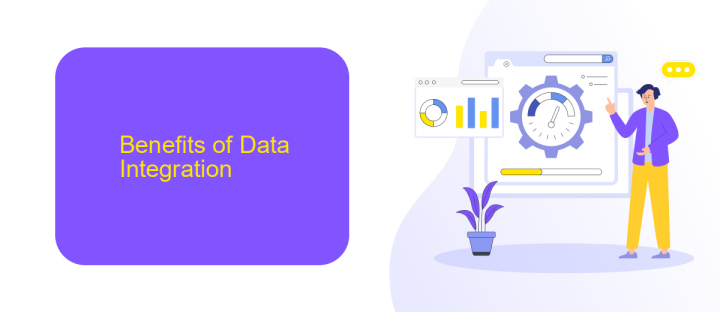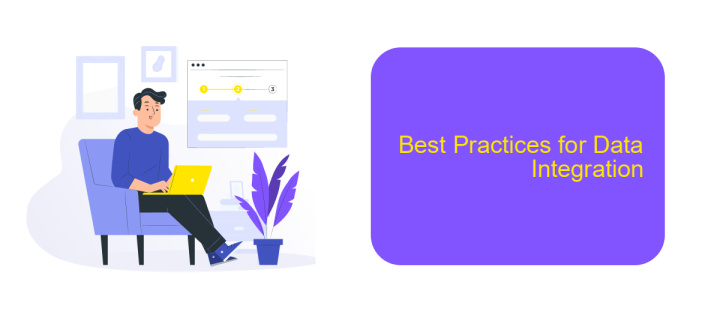Data Integration Blog
In today's data-driven world, seamless data integration is crucial for businesses striving to stay competitive. By consolidating information from diverse sources, organizations can gain comprehensive insights, streamline operations, and make informed decisions. This blog delves into the key strategies, tools, and best practices for effective data integration, helping you unlock the full potential of your data landscape.
Introduction to Data Integration
Data integration is a crucial process in modern business environments, enabling organizations to combine data from various sources into a unified view. This integration facilitates better decision-making, enhances operational efficiency, and provides a comprehensive understanding of business performance.
- Combines data from multiple sources
- Enhances data accuracy and consistency
- Improves decision-making processes
- Boosts operational efficiency
One of the tools that significantly streamline data integration is ApiX-Drive. This service allows businesses to automate data flows between different applications and systems, reducing manual effort and minimizing errors. By leveraging ApiX-Drive, companies can ensure seamless data integration, enabling them to focus on strategic tasks rather than technical challenges.
Benefits of Data Integration

Data integration offers numerous benefits that can significantly enhance business operations. By consolidating data from various sources into a single, unified view, organizations can achieve improved data accuracy and consistency. This streamlined approach reduces the risk of errors and ensures that decision-makers have access to reliable information. Moreover, data integration facilitates real-time data access, enabling businesses to respond swiftly to market changes and make informed decisions based on the most current data available.
Another significant advantage of data integration is the automation of workflows. Tools like ApiX-Drive simplify the process of connecting different applications and services, allowing for seamless data transfer and synchronization. This not only saves time but also reduces the workload on IT departments, freeing them to focus on more strategic tasks. Additionally, integrated data systems enhance collaboration across departments by providing a holistic view of the organization’s data, leading to better coordination and more effective project management.
Challenges of Data Integration

Data integration is a critical aspect of modern business operations, but it comes with its own set of challenges. These challenges can hinder the seamless flow of information across various systems, impacting decision-making and operational efficiency.
- Data Quality: Ensuring the accuracy, consistency, and completeness of data from multiple sources is a significant challenge.
- Data Silos: Different departments often use different systems, leading to isolated data that is difficult to integrate.
- Scalability: As businesses grow, their data integration needs become more complex, requiring scalable solutions.
- Security: Protecting sensitive data during integration processes is crucial to avoid breaches and compliance issues.
- Cost: Implementing and maintaining data integration solutions can be expensive, especially for small and medium-sized enterprises.
To address these challenges, businesses can utilize tools like ApiX-Drive, which simplifies the process of integrating various applications and services. ApiX-Drive offers a user-friendly interface and robust features to ensure data is accurately and securely transferred between systems, helping businesses overcome common data integration hurdles.
Best Practices for Data Integration

Effective data integration is crucial for businesses looking to leverage their data for insights and decision-making. To ensure successful integration, it is essential to follow best practices that streamline the process and maintain data quality.
One of the key practices is to establish clear data governance policies. This involves defining who has access to data, how data is classified, and the protocols for data handling. Additionally, utilizing reliable tools and services like ApiX-Drive can simplify the integration process by automating data transfers between various platforms.
- Define clear data governance policies.
- Utilize reliable integration tools like ApiX-Drive.
- Ensure data quality and consistency.
- Regularly monitor and audit data flows.
- Implement robust security measures.
By adhering to these best practices, organizations can achieve seamless data integration that supports their operational and strategic goals. Tools such as ApiX-Drive not only facilitate the integration process but also help maintain data integrity and security, ensuring that businesses can trust their data-driven decisions.
Future of Data Integration
The future of data integration is poised to be transformative, driven by advancements in artificial intelligence and machine learning. These technologies will enable more sophisticated data mapping and transformation, reducing the need for manual intervention. As organizations continue to accumulate vast amounts of data from diverse sources, the ability to seamlessly integrate and analyze this information will become a critical competitive advantage. Real-time data integration will also gain prominence, allowing businesses to make faster, more informed decisions.
Moreover, the rise of no-code and low-code platforms like ApiX-Drive will democratize data integration, making it accessible to non-technical users. ApiX-Drive, for instance, offers an intuitive interface that simplifies the process of connecting various applications and automating workflows. This shift will empower smaller businesses to leverage data integration technologies without the need for extensive IT resources. As data integration tools continue to evolve, we can expect greater interoperability, enhanced security features, and more robust data governance, ensuring that data remains both accessible and protected.
FAQ
What is data integration?
Why is data integration important?
What are the common challenges in data integration?
How can I automate data integration processes?
What are some best practices for successful data integration?
Apix-Drive is a universal tool that will quickly streamline any workflow, freeing you from routine and possible financial losses. Try ApiX-Drive in action and see how useful it is for you personally. In the meantime, when you are setting up connections between systems, think about where you are investing your free time, because now you will have much more of it.

